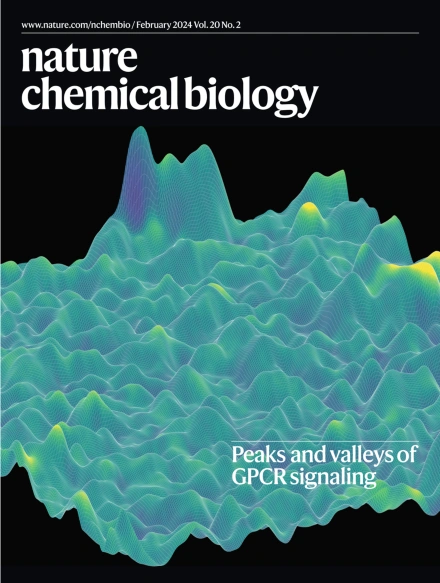合成受体系统的进化。
IF 13.7
1区 生物学
Q1 BIOCHEMISTRY & MOLECULAR BIOLOGY
引用次数: 21
摘要
受体使细胞能够检测、处理和响应有关其环境的信息。在过去的二十年里,合成生物学家重新调整了自然受体的物理部分和概念,以设计合成受体。这些技术实现了定制的感知和反应程序,将细胞与细胞外和细胞内线索的相互作用与用户定义的反应联系起来。当与信息处理工具相结合时,这些进步使得能够对复杂的定制功能进行编程。近年来,合成受体及其能力的库已经发生了实质性的发展——我们在这里使用的术语是指系统的改进和扩展。在这里,我们调查了现有的基于蛋白质的受体和信号处理组件的哺乳动物合成生物学工具包,强调了进化和整合一些基础合成受体系统的努力。然后,我们提出了一种工程化和改进受体系统的通用策略,以满足定义的功能目标,称为“合成受体工程的度量方法”(MEASRE)。本文章由计算机程序翻译,如有差异,请以英文原文为准。

The evolution of synthetic receptor systems
Receptors enable cells to detect, process and respond to information about their environments. Over the past two decades, synthetic biologists have repurposed physical parts and concepts from natural receptors to engineer synthetic receptors. These technologies implement customized sense-and-respond programs that link a cell’s interaction with extracellular and intracellular cues to user-defined responses. When combined with tools for information processing, these advances enable programming of sophisticated customized functions. In recent years, the library of synthetic receptors and their capabilities has substantially evolved—a term we employ here to mean systematic improvement and expansion. Here, we survey the existing mammalian synthetic biology toolkit of protein-based receptors and signal-processing components, highlighting efforts to evolve and integrate some of the foundational synthetic receptor systems. We then propose a generalized strategy for engineering and improving receptor systems to meet defined functional objectives called a ‘metric-enabled approach for synthetic receptor engineering’ (MEASRE). Synthetic receptor signaling systems have evolved as platforms for user-controlled programming of cellular functions. This Perspective reviews these advances and defines a metrics-based engineering workflow to support future engineering efforts.
求助全文
通过发布文献求助,成功后即可免费获取论文全文。
去求助
来源期刊

Nature chemical biology
生物-生化与分子生物学
CiteScore
23.90
自引率
1.40%
发文量
238
审稿时长
12 months
期刊介绍:
Nature Chemical Biology stands as an esteemed international monthly journal, offering a prominent platform for the chemical biology community to showcase top-tier original research and commentary. Operating at the crossroads of chemistry, biology, and related disciplines, chemical biology utilizes scientific ideas and approaches to comprehend and manipulate biological systems with molecular precision.
The journal embraces contributions from the growing community of chemical biologists, encompassing insights from chemists applying principles and tools to biological inquiries and biologists striving to comprehend and control molecular-level biological processes. We prioritize studies unveiling significant conceptual or practical advancements in areas where chemistry and biology intersect, emphasizing basic research, especially those reporting novel chemical or biological tools and offering profound molecular-level insights into underlying biological mechanisms.
Nature Chemical Biology also welcomes manuscripts describing applied molecular studies at the chemistry-biology interface due to the broad utility of chemical biology approaches in manipulating or engineering biological systems. Irrespective of scientific focus, we actively seek submissions that creatively blend chemistry and biology, particularly those providing substantial conceptual or methodological breakthroughs with the potential to open innovative research avenues. The journal maintains a robust and impartial review process, emphasizing thorough chemical and biological characterization.
 求助内容:
求助内容: 应助结果提醒方式:
应助结果提醒方式:


